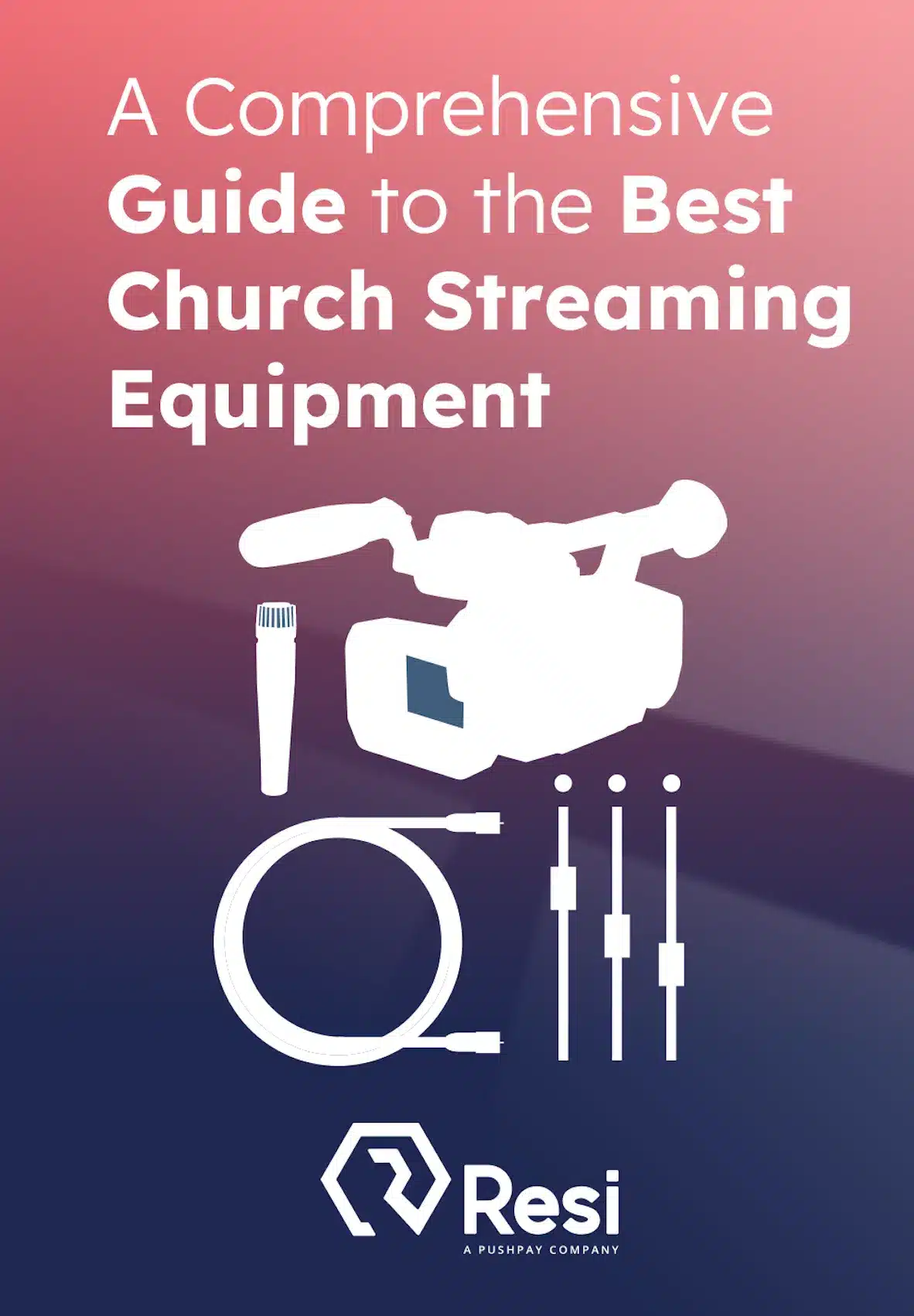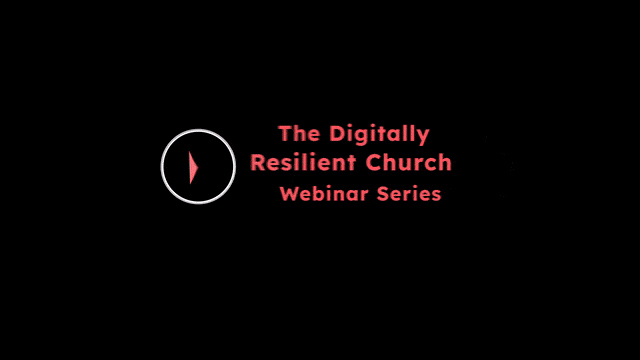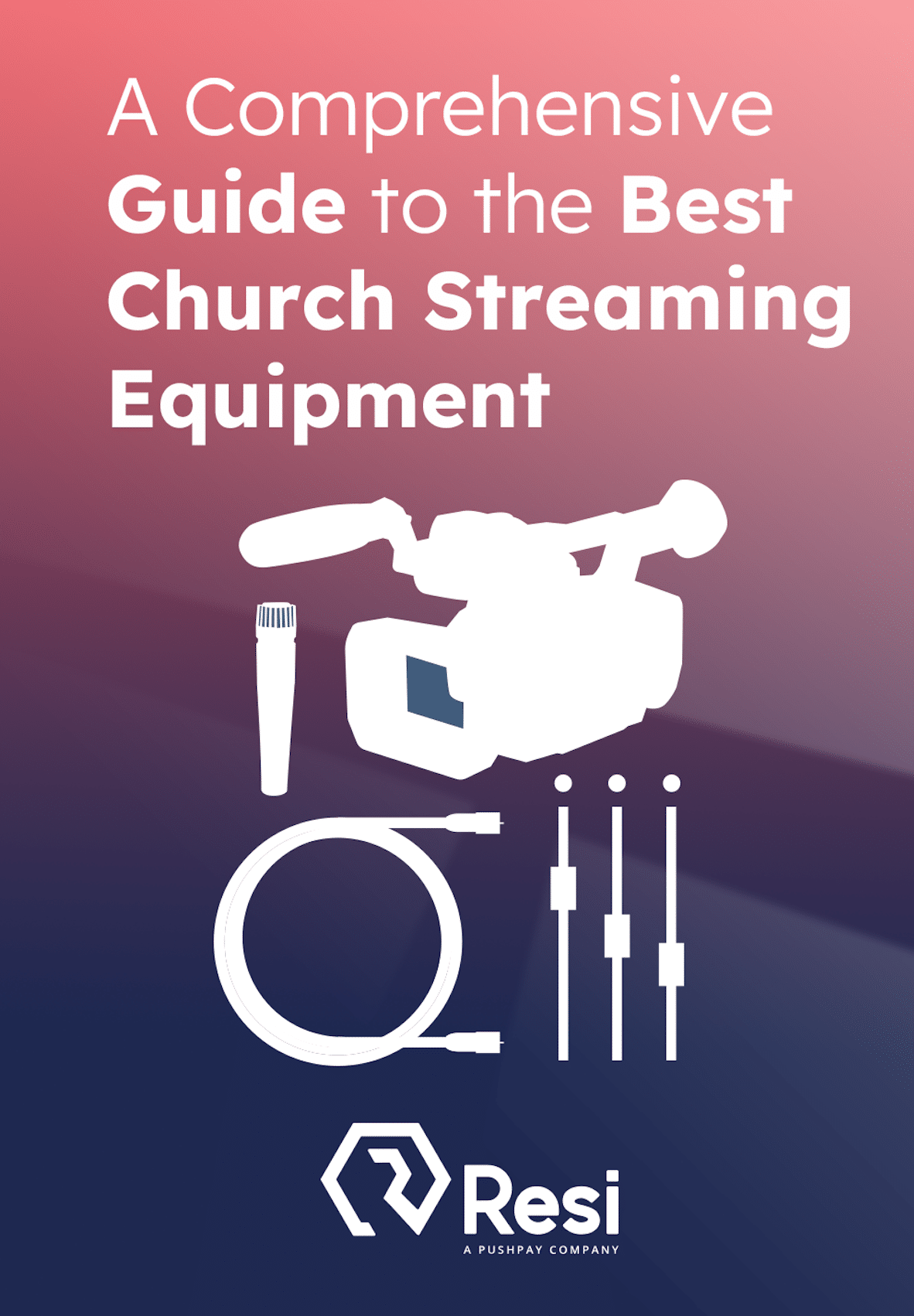
Whether you’re streaming a weekly event, producing content daily, or supporting a large-scale broadcast setup, your gear deserves more than a place on a shelf between uses. Live streaming equipment works hard behind the scenes—capturing content, pushing video to platforms, and holding up under pressure when it matters most.
But without proper care and storage, even high-end equipment can wear down faster than it should. Overheating, unstable connections, dusty ports, and signal degradation often point back to one root cause: neglect. The good news? It’s avoidable.
With some practical habits and thoughtful storage choices, your gear can stay reliable for years—whether you’re running a solo setup or managing multiple locations.
Best Livestreaming Equipment
Discover what top-rated equipment we recommend adding to your church streaming toolkit.
Download for free!
Understanding your streaming equipment first
Understanding your streaming equipment is necessary for delivering high-quality live streams. Your streaming audio and video setup typically consists of a camera, microphone, lighting, and a streaming device.
When choosing your streaming equipment, consider the type of content you will be streaming, the environment you will be streaming from, and your budget. For instance, if you will be streaming from a well-lit room, you may not need to invest heavily in lighting equipment. Conversely, if you will be streaming from a dimly lit room, additional lighting equipment may be needed.
Why long-term streaming gear care is worth it
Streaming hardware is an investment, and it’s easy to forget that most failures don’t happen overnight—they’re the result of months (or years) of gradual wear and tear. Cables fray. Ports loosen. Heat builds up. And the stream suffers.
When your production depends on consistency, reliability and production quality become just as important as the quality of the content itself. That’s one of the reasons Resi’s platform is built with hardware-level redundancy and offline-first streaming tech—to remove the pressure of real-time uploads. But gear maintenance still plays a part in what your viewers experience.
If you’re managing equipment across a campus or even multiple locations, like those using Resi’s multisite streaming solution, gear longevity isn’t just helpful—it’s a strategic advantage.
Start with smarter storage for streaming setups
Storing streaming gear safely isn’t complicated, but it does require some intention. The right environment can reduce your maintenance needs and help avoid slowdowns caused by dust, heat, or humidity.
The best place to store equipment is dry, clean, and climate-controlled. Avoid attics, garages, or back closets that fluctuate in temperature or collect moisture. Airflow also matters—especially if the gear is still plugged in between uses. Crowded shelves or tightly packed rack spaces trap heat and increase the chance of overheating, especially with encoders or video switchers that run continuously.
If you’re storing portable equipment—like cameras or cables—between services or events, padded containers or cases can help prevent physical wear. Labeling those cases by function or room setup can also cut down setup time, especially when you’re rotating teams or volunteers.
Best Livestreaming Equipment
Discover what top-rated equipment we recommend adding to your church streaming toolkit.
Download for free!
Keep it clean, inside and out
Dust and dirt might not seem like a big deal—until they start impacting fan speed or signal quality. Over time, debris can collect in vents, ports, and under keys or knobs. That buildup restricts airflow and increases internal temperature, putting pressure on power supplies and processors.
Set a regular routine to wipe down external surfaces with a soft, lint-free cloth. Use compressed air (not a vacuum) to clean vents and fans without opening the equipment. Check your HDMI, SDI, or USB ports for dust buildup or worn connectors—especially if you’re plugging and unplugging gear often.
And don’t forget cables. Bent pins or loose-fitting ends can cause signal drops or audio interference that’s tricky to diagnose during a live stream. Keeping cables coiled properly and avoiding tension at the ends can add years to their lifespan.
Prevent problems before they start to improve production quality
Like a vehicle that benefits from regular tune-ups, streaming equipment performs better when it’s checked on before something goes wrong. Waiting until your gear fails means risking downtime right when you need it most.
This is especially important if you’re using broadcast equipment alongside tools like Resi Studio, where your stream layout, graphics, and switching rely on everything working together smoothly. Spotting a bad cable or loose port ahead of time can save hours of troubleshooting during a live event. Ensure that all devices draw power efficiently from their respective sources to avoid unexpected shutdowns during a live event.
One simple way to stay ahead is to create a recurring check-in schedule. Once a month, power on each device and:
- Check for firmware updates from the manufacturer
- Listen for unusual fan noise or signs of overheating
- Inspect cables and ports for physical wear
- Confirm all gear connects and syncs properly with your streaming software
A five-minute inspection can catch a lot before it becomes a bigger issue.
Best Livestreaming Equipment
Discover what top-rated equipment we recommend adding to your church streaming toolkit.
Download for free!
Give travel gear extra attention
If your streaming setup moves often—whether for weekly events, off-site shoots, or mobile campuses—extra wear is part of the game. Encoders, cameras, switchers, and monitors all take on risk during travel, especially without the right cases or transport protocols in place.
Investing in solid travel gear, including padded hard cases and labeled cable wraps, can reduce stress on your equipment and your team. But even more important is training—helping whoever packs and unpacks the gear know how to handle it properly.
Don’t skip the software side
Gear performance isn’t just about physical hardware. Outdated software can lead to instability, signal delays, or compatibility issues with your streaming platform. Keeping your firmware, encoding tools, and switcher interfaces up to date can support smoother streams and easier control.
If you’re using presentation software like ProPresenter as part of your setup, knowing how to manage updates and compatibility across devices is a big deal.
Best Livestreaming Equipment
Discover what top-rated equipment we recommend adding to your church streaming toolkit.
Download for free!
Live streaming equipment doesn’t have to wear out fast. A few smart routines—cleaning, checking in regularly, and storing gear intentionally—can dramatically extend its usable life. That means less downtime, fewer surprise expenses, and more confidence heading into every broadcast.
Whether you’re using Resi to stream from a single location, managing remote setups, or producing content on the go, taking care of your gear supports everything you’re building.
If you’re looking for personalized advice on how to integrate Resi’s platform into your current setup—or need help with gear compatibility—reach out to our team. We’d be glad to help you think through solutions that fit your workflow, your budget, and your goals.
Disclaimer: This content has been generated, at least in part, by artificial intelligence.







